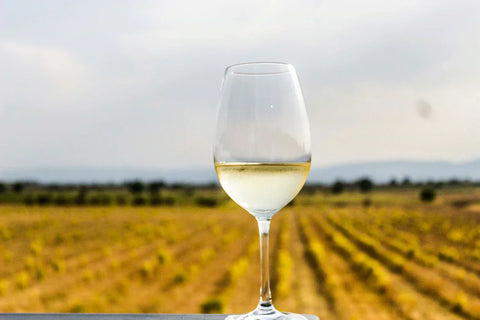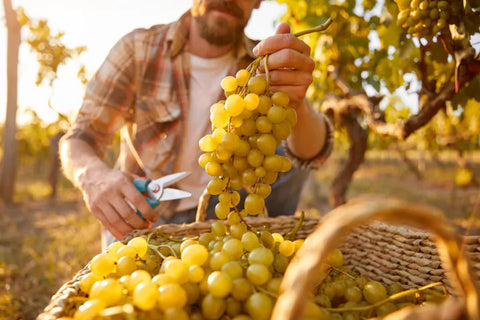McLaren Vale, a famous wine region nestled south of Adelaide in South Australia, has long been celebrated for its robust Shiraz. However, in recent decades, Grenache has emerged as a star varietal, producing wines of remarkable elegance, complexity, and versatility.
This article delves into the evolving world of McLaren Vale Grenache, exploring its distinct flavour profile, its potential for liqueur creation, and, most importantly, its exceptional ability to harmonise with a diverse range of local delicacies, with a particular focus on Australian food pairings and accompanying recipes.
The Distinguished Flavour Profile of McLaren Vale Grenache
McLaren Vale Grenache typically showcases a vibrant and expressive aromatic and flavour spectrum, setting it apart from its counterparts in other regions. Influenced by the region's Mediterranean climate, old vines, and diverse soil types (including ancient McLaren Vale Grenache, terra rossa, and sand over limestone), these wines often exhibit:
-
Aromatics: A captivating bouquet of red fruits like raspberry, cherry, and strawberry often dominates, frequently accompanied by intriguing notes of white pepper, subtle spice (cinnamon, star anise), dried herbs (garrigue, thyme), and sometimes a delicate floral lift (violets). As the wines age, they can develop more savoury characters, including leather, tobacco, and earthy undertones.
-
Palate: On the palate, McLaren Vale Grenache is renowned for its luscious fruit generosity, balanced by a fine acidity and often, beautifully integrated, silky tannins. The medium-bodied structure provides a delightful mouthfeel, making it approachable yet capable of considerable depth. It typically avoids the overt heaviness sometimes associated with other red varietals, offering a more graceful and nimble expression. The hallmark is its easy drinkability and a long, clean finish that leaves a lasting impression of bright fruit and spice.
Considerations for Liqueur Creation
While Grenache is primarily celebrated as a table wine, its rich fruit character and inherent sweetness, particularly from riper fruit, make it an intriguing candidate for liqueur creation. The process would typically involve macerating Grenache grapes or a high-quality Grenache wine with a neutral spirit, followed by sweetening and often the addition of botanicals or other fruit essences to enhance specific flavour notes.
For a McLaren Vale Grenache liqueur, key considerations would include:
-
Fruit Concentration: Selecting very ripe Grenache grapes or a concentrated Grenache wine to capture the intense berry and plum notes.
-
Spirit Base: A clean, high-quality grape spirit or neutral grain spirit would serve as the ideal base to allow the Grenache character to shine through without interference.
-
Sweetening: Balancing the natural fruit sweetness with additional sugar to create a luscious, syrupy texture characteristic of liqueurs. The level of sweetness would depend on the desired style – from a drier, more aromatic digestif to a sweeter, dessert-style liqueur.
-
Botanical Infusions: To complement the Grenache's natural spice and herbal notes, judicious additions of ingredients like orange peel, star anise, cinnamon stick, or even a touch of native Australian botanicals like lemon myrtle or wattle seed could elevate the complexity. These should be used sparingly to avoid overpowering the Grenache.
-
Ageing: A brief period of resting or aging (e.g., a few months) after blending can allow the flavours to meld and integrate, resulting in a smoother, more harmonious liqueur.
Such a liqueur could be enjoyed neat as a digestif, drizzled over desserts, or used as a flavourful component in cocktails, offering a unique expression of McLaren Vale Grenache.
Suggested Food Pairings in Australia and Recipes
The versatility of McLaren Vale Cellar's Grenache makes it quite versatile at the dinner table, capable of complementing a vast array of dishes. Its bright acidity and moderate tannins allow it to cut through richness, while its fruit and spice notes beautifully enhance savoury flavours. Here's a guide to pairing it with suggested Australian foods and recipes:
1. Grilled Lamb with Native Mint and Bush Tomato Relish
Why it works: Lamb is a classic pairing for Grenache due to the wine's ability to complement the meat's richness without overpowering it. The native mint (e.g., river mint, native peppermint) offers a herbaceous freshness that mirrors the wine's herbal undertones, while the bush tomato relish provides a sweet and tangy counterpoint that highlights the Grenache's fruit.
Recipe Idea: Marinate lamb cutlets or a butterflied leg of lamb in olive oil, garlic, rosemary, and finely chopped native mint. Grill to your desired doneness. For the relish, simmer diced bush tomatoes (or regular tomatoes with a pinch of smoked paprika for depth), finely chopped red onion, a touch of vinegar, brown sugar, and a hint of chilli until thickened. Serve the lamb with the relish and a side of roasted root vegetables.
2. Barbecued Prawns with Finger Lime Dressing
Why it works: A lighter, fresher style of McLaren Vale Grenache can beautifully accompany seafood. The smoky char from the barbecue complements the wine's subtle savoury notes, while the zesty, citrusy burst of finger lime cuts through the prawn's sweetness and highlights the Grenache's acidity.
Recipe Idea: Skewer large green prawns and brush with olive oil, a pinch of chilli, and smoked paprika. Barbecue until cooked through. For the dressing, whisk together olive oil, the pulp of several finger limes, finely chopped coriander, and a touch of salt. Drizzle generously over the hot prawns.
3. Wood-Fired Pizza with Prosciutto, Fig, and Rocket
Why it works: The smoky char of wood-fired pizza resonates with the subtle complexities of Grenache. The salty prosciutto, sweet fresh figs, and peppery rocket create a balance of flavours that the Grenache can easily navigate, with its fruitiness complementing the fig and its acidity cutting through the richness of the prosciutto and cheese.
Recipe Idea: Prepare a classic pizza dough. Top with a thin layer of tomato passata, mozzarella, and slices of prosciutto. Cook in a hot oven or wood-fired oven until the crust is golden and the cheese is bubbly. Once out of the oven, scatter with fresh rocket leaves and slices of fresh fig. A drizzle of balsamic glaze can add an extra layer of complexity.
4. Charcuterie Board Featuring Australian Cheeses
Why it works: A well-curated charcuterie board is a Grenache's playground. The wine's versatility allows it to pair with a range of textures and flavours. Specifically, medium-bodied Grenache complements hard cheeses like aged cheddar, semi-hard cheeses like a creamy washed-rind, and even some soft cheeses like a goats' cheese log. Cured meats, olives, and fruit paste provide contrasting elements that the wine can effortlessly bridge.
Suggested Cheeses:
-
Hard: Milawa Cheese Co. King River Gold (Victoria)
-
Semi-Hard: Pyengana Dairy Farmhouse Cheddar (Tasmania)
-
Soft/Goat: Meredith Dairy Chevre (Victoria)
-
Accompaniments: Kangaroo or venison salami, olives, quince paste, crusty bread.
5. Pan-Seared Duck Breast with Cherry Reduction
Why it works: Duck is a classic match for wines with prominent red fruit notes. The richness of the duck meat is beautifully counteracted by the Grenache's acidity, while the cherry reduction amplifies the wine's own cherry and berry fruit characters, creating a harmonious and sophisticated pairing.
Recipe Idea: Score the skin of duck breasts and season well. Pan-sear skin-side down until crispy and most of the fat has rendered, then flip and cook to your desired doneness. For the reduction, deglaze the pan with a splash of Grenache, then add pitted fresh or frozen cherries, a knob of butter, and a touch of balsamic vinegar. Simmer until thickened to a syrupy consistency. Serve the sliced duck breast with the cherry reduction.
Key Features of McLaren Vale Grenache
-
Old Vine Heritage: McLaren Vale boasts some of the oldest Grenache vines in the world, many dating back over 100 years, contributing to concentrated fruit and complex flavour profiles.
-
Diverse Terroir: The region's varied soil types, from sandy soils to terra rossa over limestone, impart distinct characteristics, leading to a wide range of Grenache styles.
-
Mediterranean Climate: Warm, dry summers and mild winters, tempered by sea breezes, provide ideal conditions for slow, even ripening, preserving acidity and enhancing fruit expression.
-
Elegance and Approachability: Unlike some heavier red wines, McLaren Vale Grenache typically offers a medium-bodied, supple structure with bright fruit and fine tannins, making it highly enjoyable young but also capable of graceful aging.
-
Food Versatility: Its balance of fruit, acidity, and moderate tannins makes it an incredibly food-friendly wine, pairing well with a broad spectrum of cuisines, from delicate seafood to robust meats.
-
Sustainable Viticulture: Many McLaren Vale producers are committed to sustainable, organic, and biodynamic farming practices, reflecting a deep respect for the land and contributing to the purity of the fruit.
FAQ's: McLaren Vale Grenache
Q1: Is McLaren Vale Grenache always a single varietal wine?
A1: While many acclaimed McLaren Vale Grenaches are single varietal, it is also commonly used in blends, particularly GSM (Grenache, Shiraz, Mourvèdre) blends. Grenache contributes vibrant fruit, spice, and a supple texture to these blends, complementing the structure of Shiraz and the savoury notes of Mourvèdre.
Q2: How long can McLaren Vale Grenache be aged?
A2: While many McLaren Vale Grenaches are delightful to drink in their youth due to their vibrant fruit, premium examples from old vines and well-managed vineyards can age gracefully for 5-15 years or even longer. With age, they develop more complex savoury, earthy, and leathery notes, retaining their characteristic spice and fruit core.
Q3: What's the ideal serving temperature for McLaren Vale Grenache?
A3: McLaren Vale Grenache is best served slightly cooler than many other full-bodied reds. An ideal serving temperature would be between 16-18°C (60-64°F). Serving it too warm can make the alcohol more prominent, while serving it too cold can mute its beautiful aromatics and fruit.
Q4: Is McLaren Vale Grenache sweet?
A4: No, McLaren Vale Grenache table wines are typically dry, meaning all the grape sugars have been fermented into alcohol. While they exhibit a rich fruit sweetness on the palate (from ripe fruit characters), this is distinct from residual sugar. If a Grenache liqueur were created, it would be sweet.
Q5: How does McLaren Vale Grenache compare to Grenache from other regions like the Rhône Valley (France) or Priorat (Spain)?
A5: McLaren Vale Grenache often offers a fruitier, more approachable, and sometimes spicier profile than its Old World counterparts. Rhône Grenache, particularly from regions like Châteauneuf-du-Pape, can be more savoury, earthy, and structured. Priorat Grenache tends to be more intensely mineral, concentrated, and high in alcohol, often with a darker fruit profile. Each region's terroir and winemaking traditions impart unique characteristics, but McLaren Vale Grenache holds its own with its distinctive vibrancy and elegance.
McLaren Vale Grenache is a wine that commands attention, not just for its intrinsic quality but for its remarkable versatility at the dining table. Its bright fruit, elegant structure, and spice notes make it an ideal partner for a diverse array of dishes, particularly those featuring the rich and varied produce of Australia. Exploring these pairings offers a truly rewarding culinary experience.




Comments (0)
There are no comments for this article. Be the first one to leave a message!